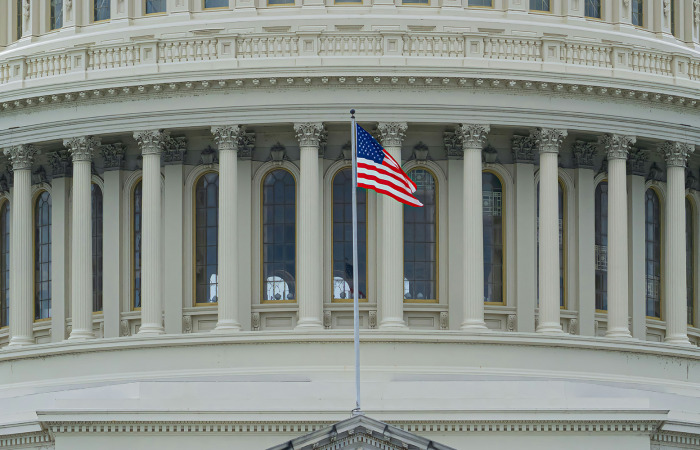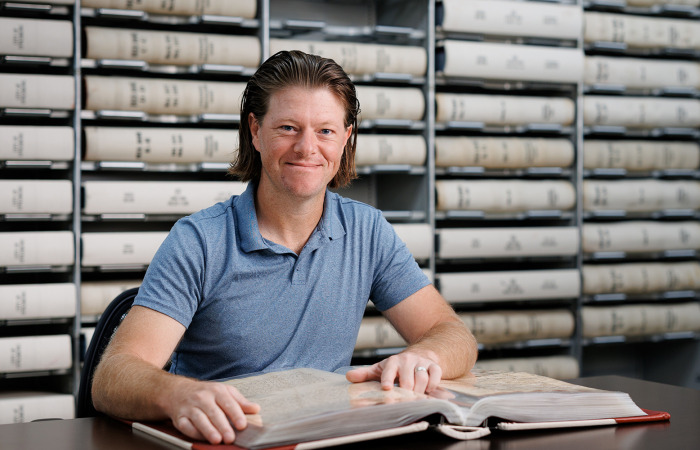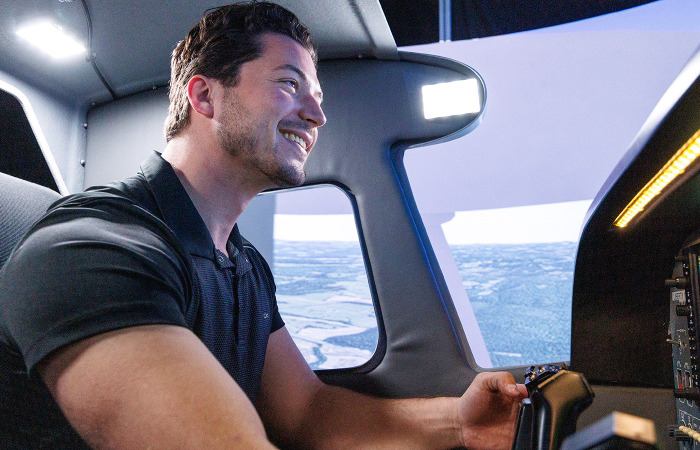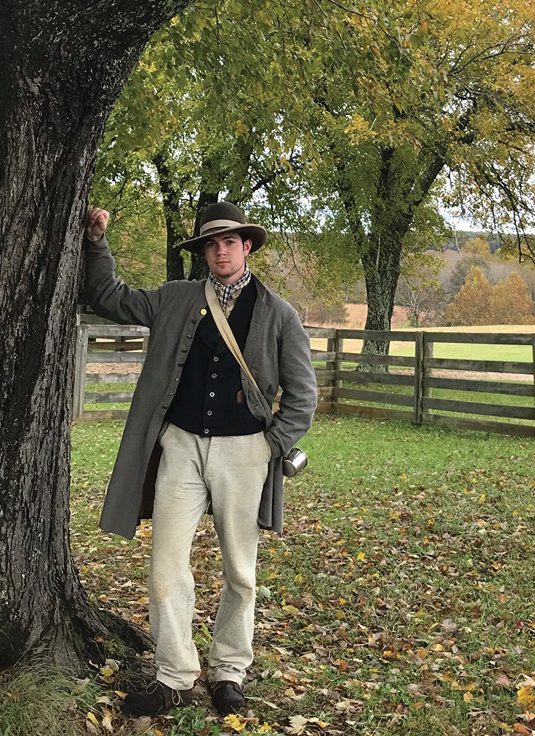
LU graduate Lucas Peed works at the Appomattox Court House National Historical Park.
At his job, Liberty University graduate Lucas Peed gets to experience the thrill of traveling back in time — to 1865 in nearby Appomattox, Va. The American Civil War is about to end. Confederate Gen. Robert E. Lee will soon be preparing to surrender the Army of Northern Virginia to Union Gen. Ulysses S. Grant and conclude the massive bloodshed of a conflict that shook the nation to its core. Peed laces up his military-issued, wooden-sole shoes, dons his wide-brimmed hat, and grabs his whittling tools and harmonica to instantly become 19-year-old soldier and Appomattox native Robert Caldwell. In a thick Southern accent, he tells modern-day guests at Appomattox Court House National Historical Park about the economic hardship his family endures when he joins the 46th Virginia Infantry and can no longer help out on the farm. He shares about the struggles of wartime, about being wounded at Petersburg, and about seeing his fellow soldiers lose their lives; he was one of the nine men left in his company at the time of the surrender.
As a living historian, Peed, who graduated in May with his M.A. in History and now works at the park (about 20 miles from campus) as a park ranger, says that going to college in Central Virginia provided him with many opportunities to learn about pivotal moments in our country’s history. Liberty is located in a region rich with the tales of Virginians who made significant contributions to America and helped the nation grow to become the leading example of democracy to the entire world.
“You can’t drive 5 miles down the road without seeing a historical marker,” he said. “This area encompasses all the areas of American history, from Native American history to the Revolutionary War, the Civil War, our founding fathers, World War II, and more. It’s everywhere — you can’t escape it even if you wanted to.”
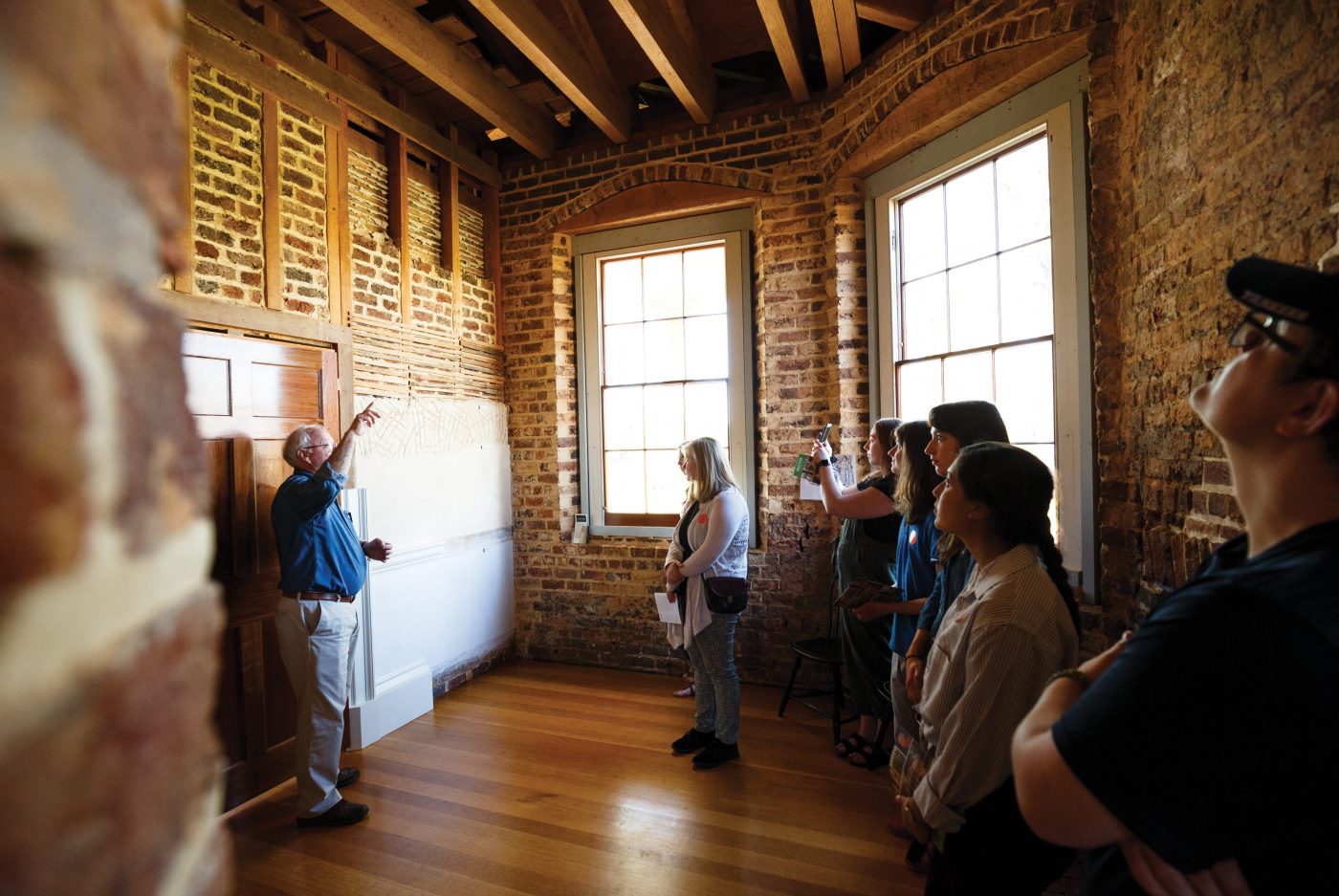
Liberty University students tour Thomas Jefferson’s Poplar Forest.
A few years ago, Peed was part of Liberty’s first public history course, which is open to all majors. Classes take field trips to historical sites, study archaeology and architecture, and learn how to bring history to life today. Donna Davis Donald is the professor.
“Virginia is the first in so many things, so this is just an incredibly rich location for American history in particular. It’s almost as if American history is local here,” Donald said. “Liberty’s campus is unique because we are right in the center of it. We are within easy driving distance of many sites, and several are just an afternoon excursion. There are about a dozen places between 30 minutes to 1 hour away, and we aren’t far from Washington, D.C., Williamsburg, Richmond, and Charlottesville.”
At the National D-Day Memorial in nearby Bedford, Va., her students learn about the brave men who fought and lost their lives on the beaches of Normandy.
At Poplar Forest, students walk where our third president and founding father Thomas Jefferson walked, exploring his retreat home located about five miles from campus. Students have also visited other presidents’ homes and birthplaces (Virginia has produced more U.S. presidents than any other state; in addition to Jefferson, Presidents George Washington, James Madison, James Monroe, William Henry Harrison, John Tyler, Zachary Taylor, and Woodrow Wilson were born here).
History classes have also ventured to Red Hill, the home of American patriot and first governor of Virginia Patrick Henry (about 35 miles southwest of campus).
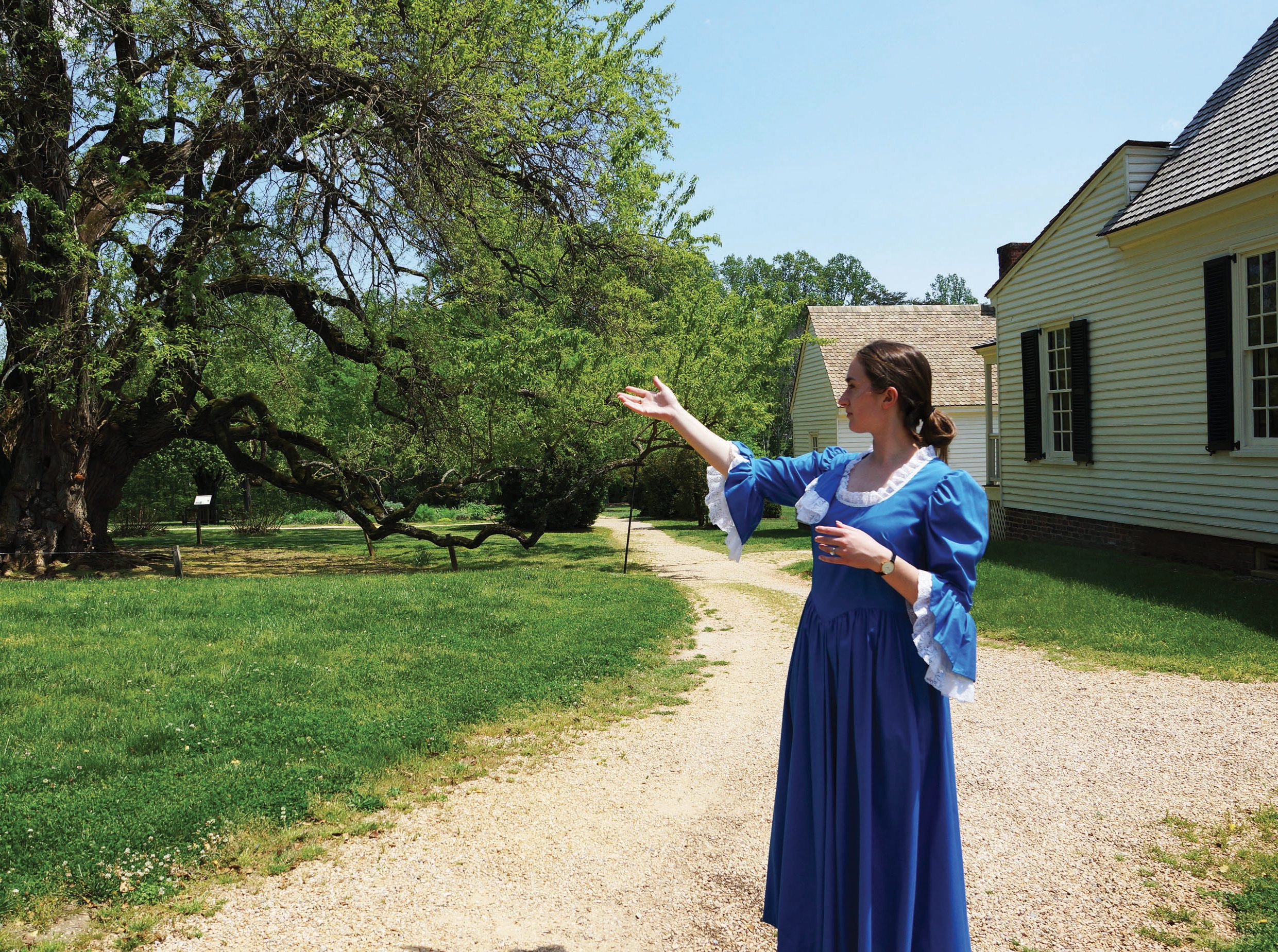
LU graduate Caitlin Pieper is the director of education for Red Hill – The Patrick Henry National Memorial.
Caitlin Pieper (’17, ’19), works full time as director of education for Red Hill – The Patrick Henry National Memorial. Like Peed, Pieper studied history at Liberty and enjoys sharing a part of the region’s past that had a lasting influence on the nation.
Henry, who practiced law throughout Central Virginia, is perhaps most famous for his “Give me liberty or give me death” speech delivered in spring 1775 in Richmond, Va., just as the Virginia House faced a decision to mobilize the military against a fast-approaching British army. He defended colonials in America and was considered a founding father by many for his work on Virginia’s Declaration of Rights, a document that greatly influenced the authors of the Declaration of Independence and the Bill of Rights. He, like the other founding fathers, believed that the nation could become stronger if the rights to life, liberty, and property could be secured without fear of government infringement.
Pieper said she loves to share Henry’s legacy with Red Hill guests, focusing not only on his statesmanship but also his Christian faith. On Henry’s deathbed, he witnessed to his doctor, Dr. George Cabell (whose Lynchburg home Point of Honor is also a city museum open for tours).
“Instead of talking about his life’s accomplishments, he was very big on telling Cabell to ‘observe the joy and security it is for a Christian man who is about to die,’ implying that he was at complete peace and was concerned about eternal life for his doctor,” Pieper said. “It’s an incredible testimony — I’m helping that live on by my work at Red Hill. I have to attribute that to Liberty, how I learned to see God through history, and now talking to people about God’s hand through history is so important to me.”
Many of our early American leaders, like Henry, supported the Christian values and biblical principles upon which our country and its laws were founded. And in higher education, Liberty remains a pillar of those values today, sending forth tomorrow’s leaders who will take cues from our nation’s beginnings and, through an appreciation for this area’s past, continue to uphold true American ideas.
Read about students’ archaeological discoveries at Mead’s Tavern, the oldest standing structure in Central Virginia.
>A sample of the public historical sites within about an hour’s drive of campus:
Lynchburg’s Old City Cemetery (noted for the Pest House Museum and the Confederate Cemetery)
Anne Spencer House (Harlem Renaissance poet)
Appomattox Court House National
Historical Park
Avoca Museum
Bedford Museum
Booker T. Washington National Monument
Brightwell’s Mill
Historic Sandusky (Union headquarters during the Battle of Lynchburg)
James Monroe’s Highland
Legacy Museum
Lynchburg Museum
National D-Day Memorial
Monticello, home of Thomas Jefferson
Point of Honor
Red Hill – The Patrick Henry Memorial
Robert Russa Moton Museum, Farmville
Stonewall Jackson House, Lexington
Thomas Jefferson’s Poplar Forest (his retreat home)
Virginia Museum of Transportation
Downtown Treasures Restored
Two historical landmarks in downtown Lynchburg have undergone major renovations recently: the Academy Center of the Arts Historic Theatre and The Virginian Hotel.
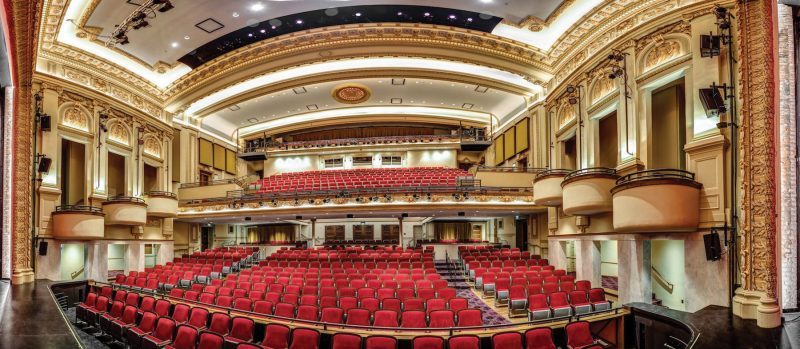 The Academy Center of the Arts Historic Theatre first opened in 1905, drawing nationally acclaimed artists to the stage, such as Will Rogers and actress Ethel Barrymore. It was one of nine popular theaters in downtown Lynchburg (and is the only one still standing). The theater closed its doors in 1958 (like many theaters across the country as television became a main form of entertainment), and the space was abandoned for four decades. With help from the nonprofit Academy Center of the Arts and many generous community members, including Liberty University, it was restored and reopened on Dec. 6, 2018. The first full-stage production to be held in the renovated theater was Liberty’s Alluvion Stage Company show, “The Will Rogers Follies: A Life in Revue,” on the same stage where Rogers had performed almost 100 years ago.
The Academy Center of the Arts Historic Theatre first opened in 1905, drawing nationally acclaimed artists to the stage, such as Will Rogers and actress Ethel Barrymore. It was one of nine popular theaters in downtown Lynchburg (and is the only one still standing). The theater closed its doors in 1958 (like many theaters across the country as television became a main form of entertainment), and the space was abandoned for four decades. With help from the nonprofit Academy Center of the Arts and many generous community members, including Liberty University, it was restored and reopened on Dec. 6, 2018. The first full-stage production to be held in the renovated theater was Liberty’s Alluvion Stage Company show, “The Will Rogers Follies: A Life in Revue,” on the same stage where Rogers had performed almost 100 years ago.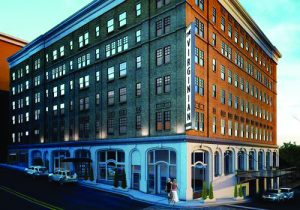 The Virginian Hotel opened in 1913 and served for 50 years as the city’s luxury hotel. It has served other purposes through the years, though, including as a dormitory for the then-Lynchburg Baptist College (now Liberty University) in the 1970s. It opened as a premier hotel last May, complete with the grandiose features that greeted its first guests, such as marble floors in the lobby, a classic staircase, and a grand ballroom. Its retail gift shop, library, and artwork throughout pay tribute to figures from Virginia’s past. The special event rooms are named for mothers of Virginian presidents. The facility features more than 7,000 square feet of event space for conferences, meetings, and receptions.
The Virginian Hotel opened in 1913 and served for 50 years as the city’s luxury hotel. It has served other purposes through the years, though, including as a dormitory for the then-Lynchburg Baptist College (now Liberty University) in the 1970s. It opened as a premier hotel last May, complete with the grandiose features that greeted its first guests, such as marble floors in the lobby, a classic staircase, and a grand ballroom. Its retail gift shop, library, and artwork throughout pay tribute to figures from Virginia’s past. The special event rooms are named for mothers of Virginian presidents. The facility features more than 7,000 square feet of event space for conferences, meetings, and receptions.

